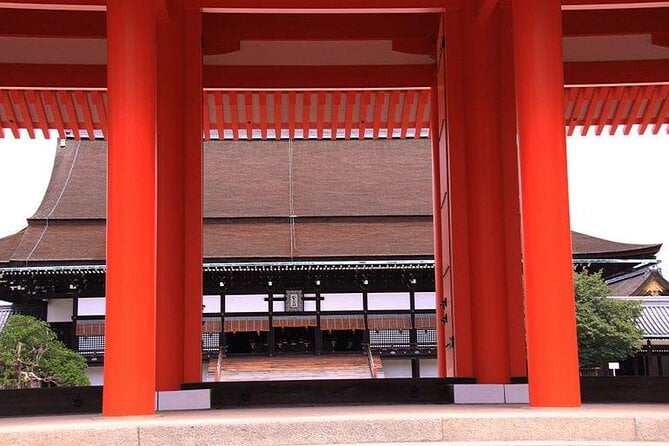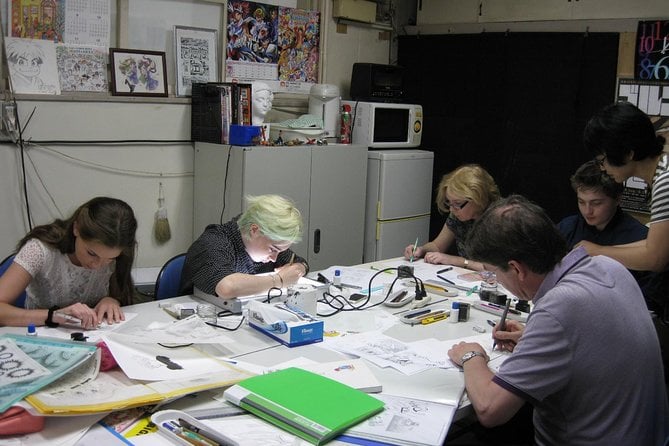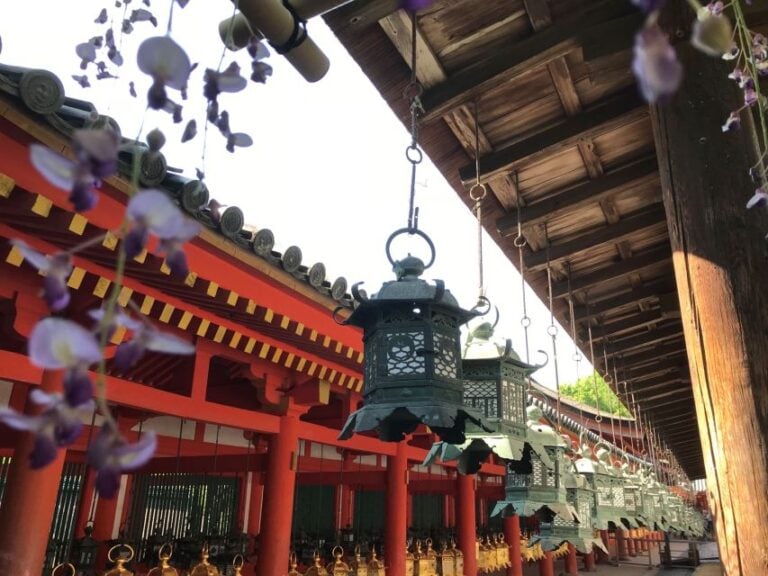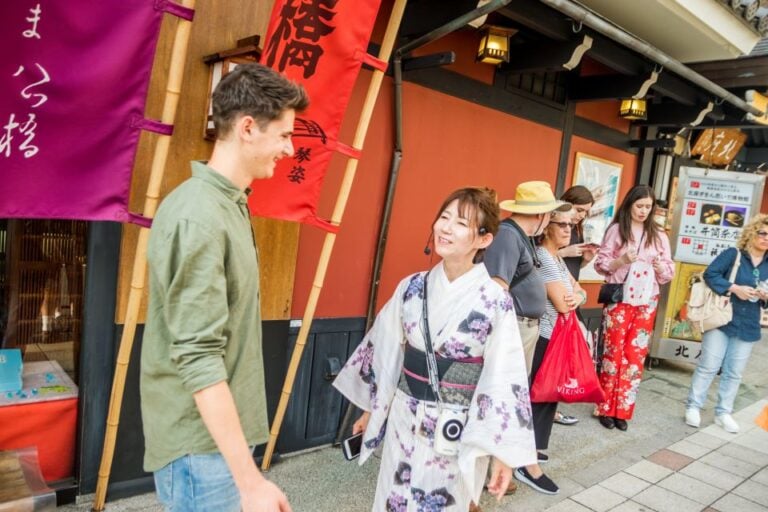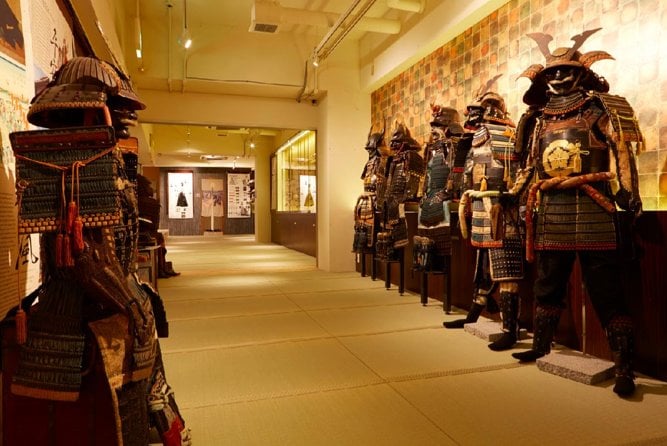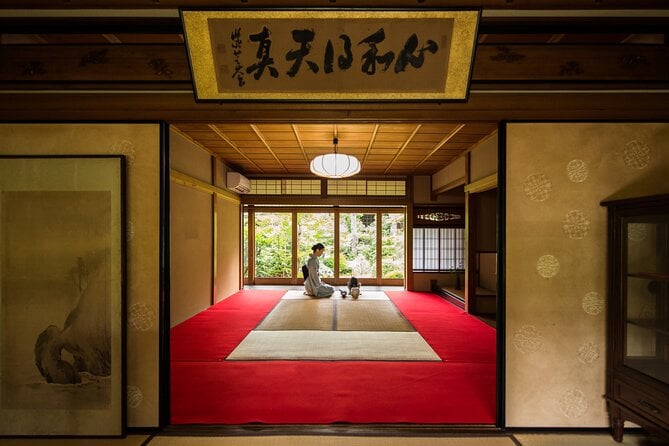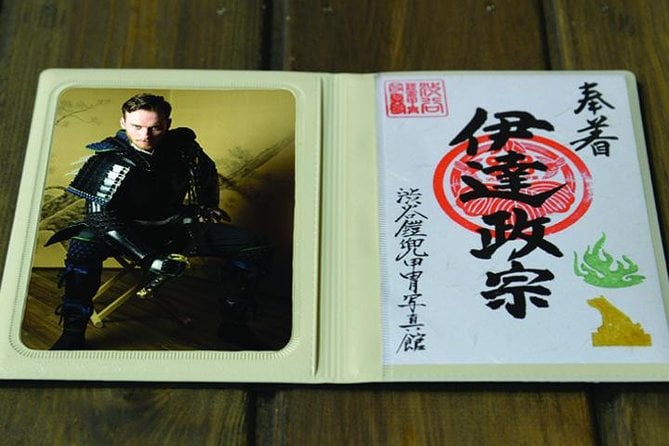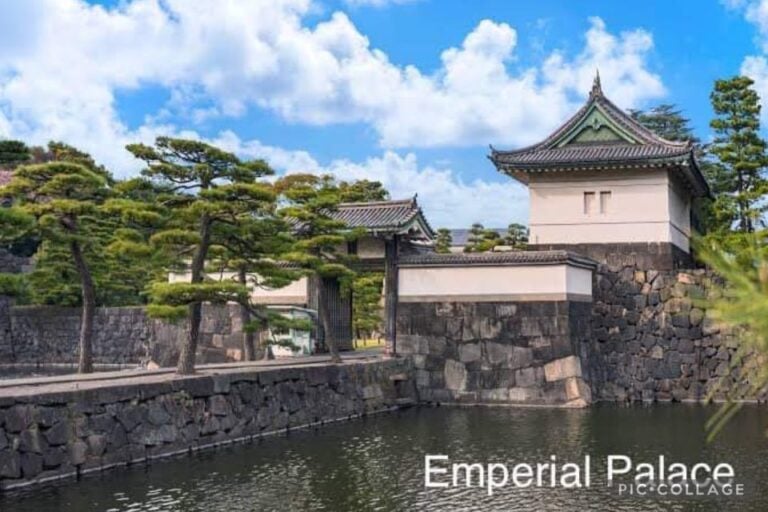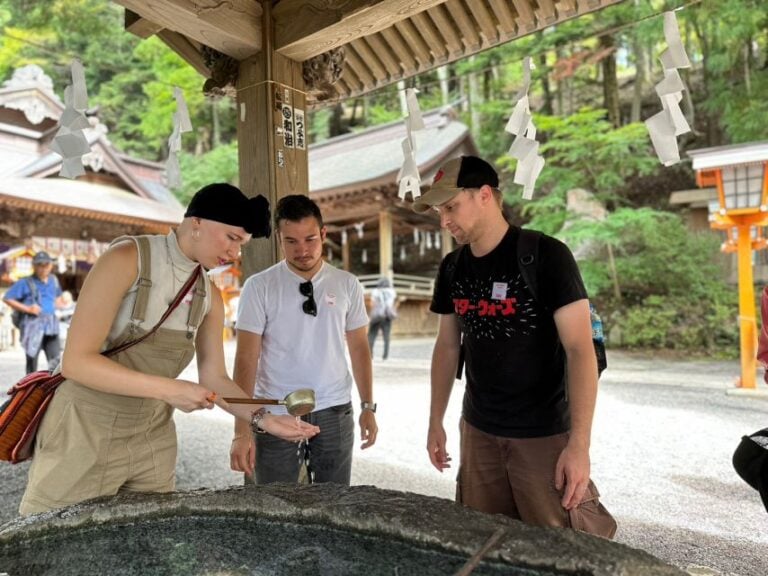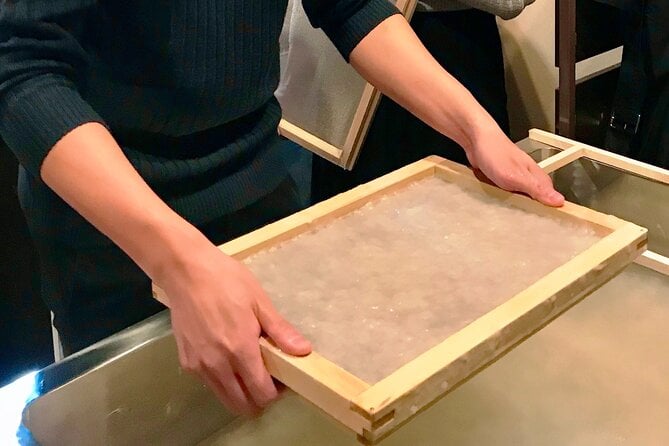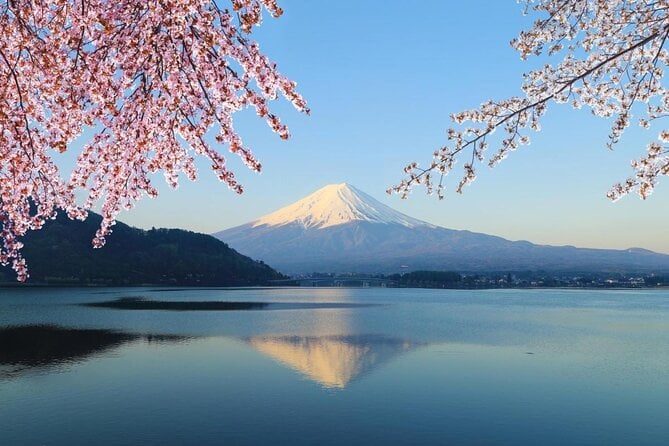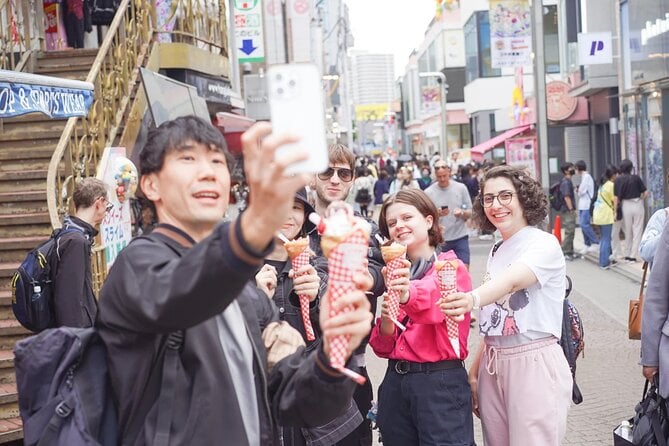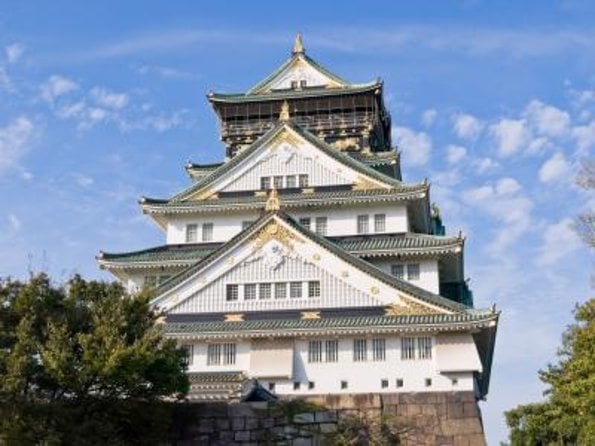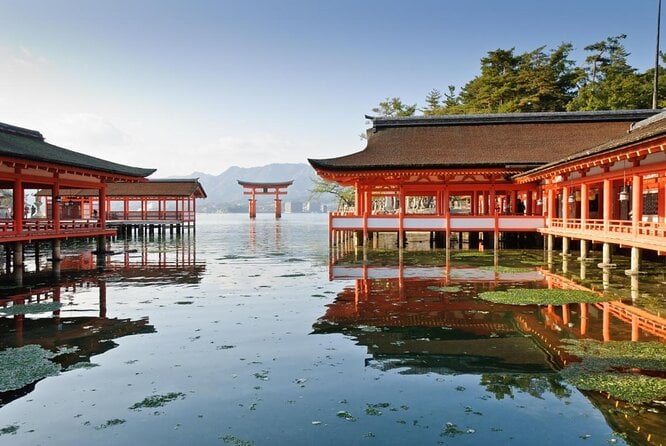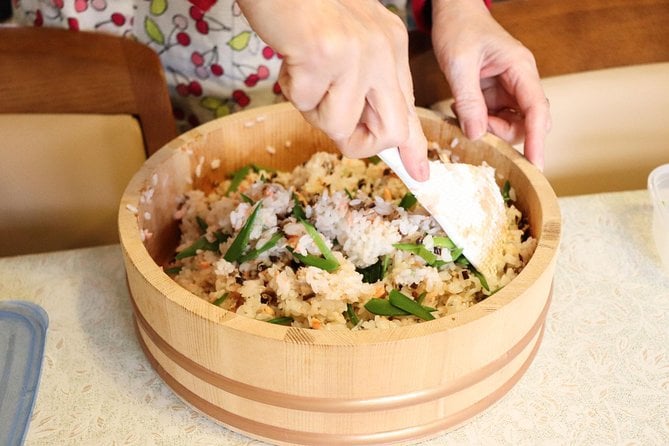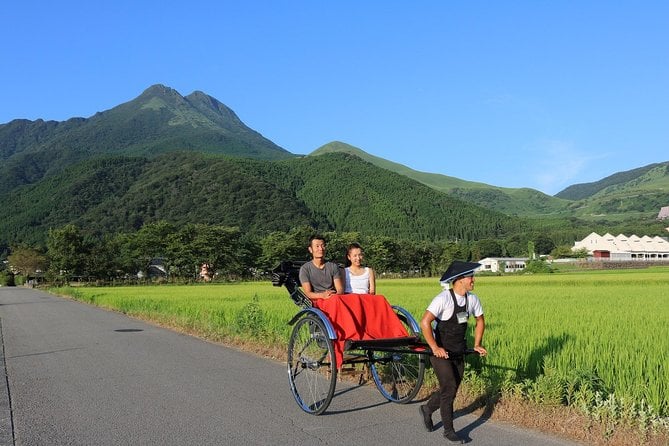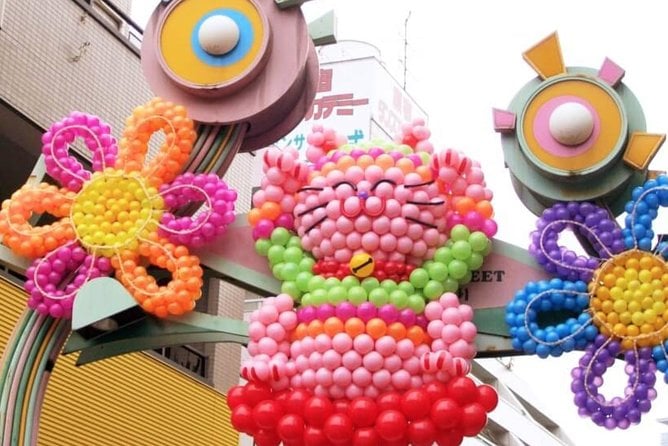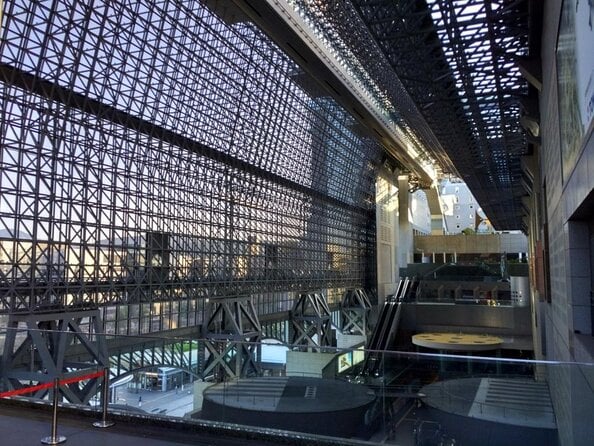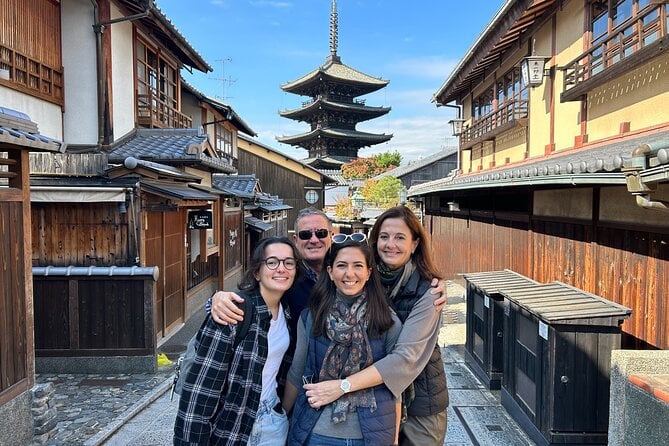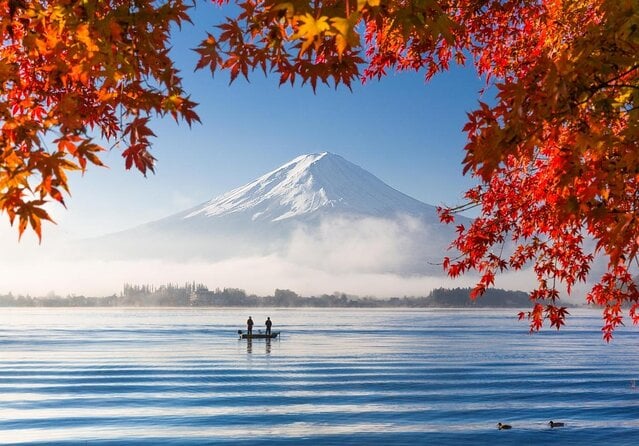Are you dreaming of exploring the vibrant streets of Tokyo and enjoying the rich cultural heritage of Kyoto? We’ve got you covered.
This Japan travel guide is your ultimate companion to make the most of your trip. Discover the best time to visit, top attractions in Tokyo, must-try Japanese foods, and much more.
Get ready to embark on an unforgettable journey through the enchanting land of the rising sun. Let’s dive in and explore all that Japan has to offer!
Good To Know
- Japan has an efficient and extensive railway network, including the famous Shinkansen.
- Different modes of transportation, such as subway, local trains, renting a car, buses, and cycling, provide options for getting around Japan.
- The best time to visit Japan depends on personal preferences and interests, with spring offering cherry blossoms, summer great for outdoor activities, autumn showcasing vibrant foliage, and winter perfect for winter sports and illuminations.
- Tokyo and Kyoto are must-visit cities in Japan, with Tokyo offering a mix of traditional neighborhoods and modern technology, while Kyoto is known for its temples and cultural heritage.
Getting Around Japan
To explore Japan efficiently, you’ll need to navigate its transportation systems. Fortunately, Japan offers a wide range of transportation options that make getting around a breeze.
The most popular mode of transportation is the efficient and extensive railway network. The Shinkansen, or bullet train, is famous for its speed and reliability, connecting major cities across the country.
For shorter distances within cities, the subway and local trains are the way to go. If you prefer to explore at your own pace, renting a car is a great option, especially in rural areas where public transportation may be limited.
Plus, buses are available for intercity travel, offering a more budget-friendly alternative. In major cities like Tokyo and Kyoto, cycling is also a popular choice, allowing you to fully enjoy the local culture while getting around efficiently.
Best Time to Visit
When planning your trip to Japan, consider the best time to visit based on the weather and seasonal attractions. The weather conditions in Japan can vary greatly depending on the time of year and the region you plan to visit.
The country experiences four distinct seasons, each offering its own unique charm. Spring, from March to May, is a popular time to visit as the cherry blossoms bloom and festivals celebrating the arrival of spring are held across the country.
Summer, from June to August, can be hot and humid, but it is also a great time to enjoy outdoor activities and attend lively summer festivals. Autumn, from September to November, is known for its vibrant foliage, particularly in places like Kyoto.
Winter, from December to February, is a great time to visit if you enjoy winter sports or want to experience the magical winter illuminations. To help you plan your trip, here is a table highlighting the best time to visit based on weather conditions and seasonal festivals and events:
| Season | Weather Conditions | Seasonal Festivals and Events |
|---|---|---|
| Spring | Mild temperatures, cherry blossoms | Hanami (cherry blossom viewing) |
| Summer | Hot and humid, occasional typhoons | Gion Matsuri (Kyoto’s famous festival) |
| Autumn | Mild temperatures, vibrant foliage | Koyo (autumn foliage viewing) |
| Winter | Cold temperatures, occasional snow | Sapporo Snow Festival |
Make sure to take into account your preferences and interests when deciding on the best time to visit Japan.
Top Attractions in Tokyo
If you’re planning a trip to Japan, make sure to visit some of the top attractions in Tokyo. The city offers a perfect blend of traditional charm and modern innovation.
Here are four must-visit places that will allow you to experience the best of both worlds:
- Asakusa: Explore the historic neighborhood of Asakusa, home to the iconic Senso-ji Temple. Enjoy the traditional atmosphere as you stroll through Nakamise Shopping Street, lined with shops selling traditional crafts and snacks.
- Shibuya Crossing: Experience the hustle and bustle of modern Tokyo at Shibuya Crossing, one of the busiest intersections in the world. Watch as the traffic lights change and a flood of people cross the street from all directions. It’s a sight you won’t want to miss!
- Akihabara: Dive into the world of technology and anime in Akihabara, the electric town of Tokyo. Explore the numerous electronics stores, manga shops, and gaming arcades. Don’t forget to visit a maid café for a unique experience!
- Meiji Shrine: Escape the city’s fast pace and find tranquility at Meiji Shrine. Surrounded by a peaceful forest, this Shinto shrine is dedicated to Emperor Meiji and Empress Shoken. Take a leisurely walk through the expansive grounds and experience the serenity of traditional Japanese spirituality.
With these top attractions, you’ll get a taste of both Tokyo’s traditional neighborhoods and its innovative technology.
Exploring Kyoto’s Temples
Ready to enjoy the rich history and serene beauty of Kyoto’s temples?
Get ready to explore must-visit temple recommendations, each with its own unique historical significance.
But before you set foot inside these sacred sites, make sure to familiarize yourself with temple etiquette and customs to show respect and fully appreciate the experience.
Let’s Set out on a journey through Kyoto’s temples together!
Must-Visit Temple Recommendations
To make the most of your visit to Kyoto, be sure to explore these top five must-visit temples:
- Kinkaku-ji (Golden Pavilion): Enjoy the rich history and stunning temple architecture of Kinkaku-ji. Experience the beauty of the golden exterior reflected in the surrounding pond, creating a picture-perfect scene.
- Ginkaku-ji (Silver Pavilion): Discover the simplicity and elegance of Ginkaku-ji, adorned with beautiful Zen gardens and a unique sand cone representing Mount Fuji. Take a leisurely stroll along the Philosopher’s Path nearby for a serene experience.
- Kiyomizu-dera: Marvel at the impressive wooden structure of Kiyomizu-dera, offering panoramic views of Kyoto. Admire the temple’s intricate design and enjoy the vibrant cherry blossoms in spring or the colorful foliage in autumn.
- Ryoan-ji: Visit Ryoan-ji to witness the famous Zen rock garden, a masterpiece of minimalism. Contemplate the carefully arranged rocks and embrace the tranquility of this UNESCO World Heritage Site.
These temples aren’t only visually captivating but also provide an opportunity to delve into the rich temple history and architecture of Kyoto. Don’t miss the chance to explore these cultural gems during your visit.
Historical Significance of Temples
When exploring Kyoto’s temples, delve into their historical significance to gain a deeper understanding of the rich cultural heritage of Japan. The temples in Kyoto not only showcase stunning architecture but also hold immense importance in Buddhist traditions.
The temple architecture in Kyoto reflects the exquisite craftsmanship and attention to detail that has been passed down through generations. From the majestic golden pavilion of Kinkaku-ji to the serene rock garden of Ryoan-ji, each temple tells a unique story.
These ancient structures have witnessed the rise and fall of dynasties, the spread of Buddhism, and the evolution of Japanese society. Exploring Kyoto’s temples allows you to enjoy Japan’s history and appreciate the spiritual and cultural significance they hold.
Temple Etiquette and Customs
As you explore Kyoto’s temples, you’ll need to be mindful of the temple etiquette and customs that are an integral part of the experience. To ensure a respectful visit and make the most of your time, here are some essential temple rituals and proper attire guidelines to keep in mind:
- Remove your shoes: Before entering the temple buildings, it’s customary to remove your shoes and place them neatly outside. This shows respect for the sacredness of the space.
- Bow respectfully: When entering and leaving the temple, it’s customary to bow as a sign of respect. This gesture is also done when approaching altars or religious objects.
- Dress modestly: Proper attire is important when visiting temples. Avoid wearing revealing clothing or items that may be considered disrespectful. Opt for comfortable yet conservative clothing.
- Silence and photography: Temples are places of contemplation, so it’s important to maintain a quiet atmosphere. Avoid talking loudly or taking flash photography, as it may disturb others or damage delicate artworks.
Must-try Japanese Foods
Indulge your taste buds with the must-try Japanese foods during your trip to Japan.
One food that you can’t miss is ramen, a popular noodle dish that comes in various flavors and styles. From the rich and creamy tonkotsu ramen to the tangy and spicy miso ramen, there are plenty of options to satisfy your cravings. Don’t forget to try the different toppings like soft-boiled eggs and tender slices of pork that enhance the flavors.
Another must-try food is sushi, and Japan is home to many famous sushi restaurants. Whether you visit the renowned Tsukiji Fish Market in Tokyo or try a sushiya in Kyoto, you’ll be treated to fresh and delicious sushi made by skilled chefs. From classic nigiri to creative rolls, the variety of sushi options will leave you wanting more.
Traditional Japanese Culture
Ready to enjoy the rich traditions of Japanese culture?
Discover the elegance and grace of tea ceremonies as you learn about the meticulous rituals and symbolism behind them.
Step into the world of fashion and explore the timeless beauty of the kimono, from its intricate designs to its cultural significance.
And don’t miss the captivating performances of Kabuki theater, where elaborate costumes, dramatic gestures, and powerful storytelling come together in a mesmerizing experience.
Get ready to embrace the enchanting traditions of Japan!
Tea Ceremonies Explained
Experience the elegance and tradition of tea ceremonies in Japan, a quintessential part of the country’s rich cultural heritage. Tea ceremony history dates back to the 9th century, when it was introduced by Buddhist monks. The rituals involved in a tea ceremony are meticulously planned and executed, reflecting the principles of harmony, respect, purity, and tranquility.
To fully appreciate and enjoy this unique cultural experience, here are four key elements to look out for:
- Tea preparation: Watch as the host carefully prepares matcha, a powdered green tea, using traditional utensils and techniques.
- Tea room design: Take in the serene atmosphere of the tea room, which is intentionally designed to create a sense of tranquility and connection with nature.
- Tea utensils: Observe the beauty and craftsmanship of the tea utensils used, such as the tea bowl, tea whisk, and tea scoop.
- Tea etiquette: Learn about the proper etiquette and gestures involved in a tea ceremony, including how to receive and drink tea with grace and appreciation.
Enjoy the artistry and mindfulness of a tea ceremony, and gain a deeper understanding of Japanese culture and traditions.
Kimono Fashion Trends
As you continue your journey through Japan’s rich cultural heritage, delve into the world of kimono fashion trends, a timeless and integral part of traditional Japanese culture.
Kimonos have been worn in Japan for centuries and continue to be a symbol of elegance and refinement. In recent years, there’s been a revival of traditional craftsmanship in kimono-making, with artisans using traditional techniques to create exquisite designs.
One of the current trends in kimono fashion is the blending of traditional elements with modern influences. This includes incorporating bold colors, unique patterns, and even incorporating contemporary accessories such as belts and handbags.
The revival of traditional craftsmanship has also led to an increased interest in vintage kimonos, with people seeking out rare and unique pieces that showcase the beauty of Japanese textile artistry.
As you explore Japan, keep an eye out for the latest kimono fashion trends and appreciate the skill and artistry behind these beautiful garments.
Kabuki Theater Highlights
Delve into the captivating world of Kabuki Theater, a vibrant and cherished tradition that continues to enchant audiences with its mesmerizing performances.
Here are some highlights of this unique art form:
- Temple Architecture: Many Kabuki theaters are located within historical temple buildings, adding to the allure and ambiance of the performances. The intricate architectural details of these temples create a breathtaking backdrop for the actors on stage.
- Kabuki Performance Styles: Kabuki offers a variety of performance styles, each with its own distinct characteristics. From the graceful movements of the ‘Aragoto’ style to the delicate and refined gestures of the ‘Nanori’ style, there’s something for all to appreciate and enjoy.
- Colorful Costumes and Makeup: One of the most striking aspects of Kabuki is its extravagant costumes and makeup. Elaborate kimonos, vibrant colors, and bold patterns transport audiences to a different era and bring the characters to life.
- Dynamic Storytelling: Kabuki performances often feature dramatic and emotionally charged storylines. With dynamic acting, expressive gestures, and powerful vocal performances, the actors captivate audiences and take them on a journey through time and culture.
Enjoy the world of Kabuki Theater and experience the magic and beauty of this traditional Japanese art form firsthand.
Off-the-Beaten-Path Destinations
Discover five hidden gems in Japan that are off the beaten path and waiting to be explored.
When it comes to unexplored hiking trails, Japan is a treasure trove. Head to the northernmost island of Hokkaido and find Daisetsuzan National Park, home to stunning landscapes and challenging trails.
For a more serene experience, venture to the Oirase Gorge in Aomori, where you can hike along a picturesque river surrounded by lush greenery.
If you’re in search of hidden hot springs, make your way to Yugawara in Kanagawa prefecture. This charming town is nestled in the mountains and offers a variety of traditional onsens to relax in.
In Gunma prefecture, Kusatsu Onsen is famous for its healing waters and beautiful scenery.
Lastly, don’t miss the hidden gem of Kurokawa Onsen in Kumamoto, where you can soak in outdoor baths surrounded by nature’s beauty.
These off-the-beaten-path destinations will surely leave you with unforgettable memories.
Outdoor Adventures in Japan
Embark on thrilling outdoor escapades in Japan, where the captivating landscapes and exhilarating activities will leave you breathless. Explore the diverse range of outdoor activities available in Japan, from hiking through majestic mountains to kayaking in crystal-clear lakes.
Here are four outdoor adventures that shouldn’t be missed:
- Mount Fuji: Conquer the iconic Mount Fuji, Japan’s highest peak, on a challenging hike. Enjoy breathtaking views from the summit and witness the stunning sunrise over the land of the rising sun.
- Kumano Kodo: Follow in the footsteps of ancient pilgrims on the Kumano Kodo trail. This UNESCO World Heritage site offers a spiritual journey through lush forests, sacred shrines, and traditional villages.
- Yakushima Island: Enjoy the mystical beauty of Yakushima Island. Explore ancient cedar forests, relax in hot springs, and encounter native wildlife on this remote and pristine island.
- Shiretoko National Park: Discover the untouched wilderness of Shiretoko National Park. Take a boat tour to observe the incredible wildlife, including brown bears, and hike along the rugged coastline for breathtaking views.
With its countless hiking trails and outdoor activities, Japan is a paradise for adventure seekers.
Shopping in Japan
Get ready to Set out on a shopping spree in Japan! With its popular shopping districts and unique Japanese souvenirs, you’ll be spoiled for choice.
From the bustling streets of Tokyo’s Shibuya and Ginza districts to the traditional shops of Kyoto’s Nishiki Market, there’s something for all.
Whether you’re looking for trendy fashion, traditional crafts, or tasty treats, Japan has it all.
Popular Shopping Districts
When visiting Japan, you can explore the vibrant shopping districts that offer a unique blend of traditional and modern shopping experiences. Here are four popular shopping districts where you can find a wide range of traditional crafts and unique items:
- Ginza – Known as Tokyo’s upscale shopping district, Ginza is home to luxury brands, department stores, and high-end boutiques. Here, you can find traditional crafts such as lacquerware, ceramics, and kimono.
- Nakamise Shopping Street – Located in Asakusa, Tokyo, this bustling shopping street is lined with shops selling traditional Japanese souvenirs and snacks. You can find items like fans, yukata, and traditional sweets.
- Dotonbori – Situated in Osaka, Dotonbori is a lively shopping and entertainment district. Here, you can shop for trendy fashion, electronics, and try local street food.
- Tenjin Underground Shopping Center – In Fukuoka, this underground shopping center is a paradise for fashion lovers. It offers a wide range of clothing stores, accessories, and cosmetics.
Explore these popular shopping districts to enjoy Japan’s rich traditional crafts and find unique souvenirs to take home.
Unique Japanese Souvenirs
Discover a stack of unique Japanese souvenirs to take home as you explore the vibrant shopping districts of Japan. From traditional crafts to modern trinkets, Japan offers a wide range of souvenir options that will remind you of your unforgettable trip.
Consider bringing home a piece of Japanese culture with traditional crafts such as ceramics, lacquerware, or textiles. These handcrafted items are not only beautiful but also hold a deep cultural significance. For a taste of Japan’s culinary heritage, why not pick up some high-quality green tea or a bottle of sake? These beverages make for perfect gifts for friends and family back home.
To help you navigate the world of Japanese souvenirs, here are some ideas to get you started:
| Souvenir | Description | Where to Buy |
|---|---|---|
| Kokeshi Dolls | Hand-carved wooden dolls | Tokyo, Kyoto, and Tohoku |
| Yuzen Silk Kimono | Hand-painted silk kimono | Kyoto |
| Maneki-neko | Beckoning cat figurine | Tokyo |
With these unique Japanese souvenirs, you can bring a piece of Japan’s rich cultural heritage back home with you. Happy shopping!
Japanese Etiquette and Customs
Learn about Japanese etiquette and customs to ensure a smooth and respectful travel experience in Japan. To fully enjoy the Japanese culture and show respect to the locals, keep these customs in mind:
- Japanese Tea Ceremonies: Participate in this traditional ritual to experience the art of tea preparation and serving. Follow the host’s lead and remember to bow before and after the ceremony.
- Traditional Japanese Fashion: Embrace the beauty of Japanese fashion by wearing traditional clothing like kimono or yukata. Be mindful of the proper way to wear and style them, and avoid cultural appropriation.
- Bowing: Bowing is an essential part of Japanese etiquette. Remember to bow when greeting someone, expressing gratitude, or apologizing. The depth of the bow depends on the situation and the person’s status.
- Removing Shoes: When entering someone’s home, a traditional inn, or certain establishments, it’s customary to remove your shoes. Follow the lead of others and place your shoes neatly by the entrance.
Planning a Budget-Friendly Trip
To save money while traveling in Japan, consider utilizing budget-friendly options for accommodations and transportation. Japan offers a variety of budget-friendly accommodation options such as guesthouses, capsule hotels, and hostels. These options provide comfortable and affordable stays, allowing you to save money for other experiences. Plus, local transportation options in Japan are efficient and cost-effective. The country’s extensive train network, including the Japan Rail Pass for travelers, offers a convenient and affordable way to travel between cities. Buses and subways are also economical choices for getting around within cities. To give you an idea of the potential savings, take a look at the table below, comparing the average prices of budget-friendly accommodation and local transportation options in Japan:
| Accommodation Options | Average Price per Night |
|---|---|
| Guesthouses | $20-40 |
| Capsule Hotels | $25-50 |
| Hostels | $30-60 |
| Transportation Options | Average Price per Trip |
|---|---|
| Trains | $5-20 |
| Buses | $2-10 |
| Subways | $1-5 |
Japan’s Cherry Blossom Season
Get ready to experience the breathtaking beauty of Japan’s cherry blossom season.
From the best viewing spots to the peak bloom period, this is a must-see event that holds great cultural significance and traditions.
Whether you stroll through Tokyo’s famous parks, visit ancient temples in Kyoto, or take a scenic boat ride along the Hirosaki Castle moat, the sight of delicate pink petals fluttering in the air is sure to leave you in awe.
Best Viewing Spots
Discover the top cherry blossom viewing spots in Japan during its vibrant and enchanting cherry blossom season. To fully enjoy the beauty of these delicate flowers, make sure to visit the following locations:
- Mount Yoshino: With over 30,000 cherry trees, this mountain offers breathtaking views and is considered one of Japan’s best cherry blossom spots. Take a leisurely hike along the trails and enjoy the sea of pink.
- Hirosaki Castle: Located in Aomori Prefecture, this historic castle is surrounded by over 2,500 cherry trees. Stroll through the park and capture stunning photos of the blossoms against the backdrop of the castle.
- Ueno Park: Situated in Tokyo, this park is home to more than 1,000 cherry trees. Take a leisurely walk around Shinobazu Pond and enjoy the picturesque scenery.
- Takamatsu Castle: Located in Kagawa Prefecture, this castle offers panoramic views of the cherry blossoms. Take a stroll along the moat and admire the cherry trees in full bloom.
These viewing spots offer the perfect combination of natural beauty and cultural heritage, making them must-visit destinations during Japan’s cherry blossom season.
Peak Bloom Period
During Japan’s cherry blossom season, you can experience the peak bloom period when the delicate flowers are in full splendor. This is the most magical time to visit Japan, as the entire country is blanketed in a vibrant display of pink and white cherry blossoms.
The peak bloom period typically lasts for about a week, but the exact timing varies each year depending on weather conditions. To celebrate this beautiful phenomenon, many cherry blossom festivals and hanami parties are held throughout the country.
Cherry blossom festivals are lively events where locals and travelers gather to enjoy food, drinks, and entertainment while admiring the blossoms. Hanami parties, on the other hand, are more laid-back gatherings where people spread picnic blankets under the cherry trees and enjoy the scenery.
It’s an experience you don’t want to miss!
Cultural Significance and Traditions
To fully appreciate Japan’s cherry blossom season, enjoy the cultural significance and traditions surrounding this enchanting time of year. Here are four cultural events and traditional arts that you should experience during this season:
- Hanami: Join the locals in their tradition of hanami, which means ‘flower viewing.’ Find a spot under the cherry blossom trees, spread out a blanket, and enjoy a picnic with friends and family while admiring the beautiful blossoms.
- Traditional tea ceremonies: Attend a traditional Japanese tea ceremony, where you can learn about the art of tea preparation and experience the tranquility of the tea room. The delicate cherry blossoms make for a perfect backdrop to this serene ritual.
- Kimono wearing: Rent a kimono and stroll through the cherry blossom parks. The vibrant colors and elegant designs of the kimono will add to the magical atmosphere of the season.
- Ikebana: Take part in an ikebana workshop, where you can learn the art of flower arrangement. Create your own cherry blossom arrangement and appreciate the harmony between nature and human creativity.
Visiting Japan’s Iconic Castles
When planning your trip to Japan, make sure to include a visit to the country’s iconic castles. Exploring castle history and marveling at their architectural brilliance is an experience you won’t want to miss.
Japan is home to numerous castles, each with its own unique story and design. From the majestic Himeji Castle, known as the ‘White Heron Castle,’ to the historic Matsumoto Castle, also known as the ‘Crow Castle,’ you’ll be transported back in time as you wander through their ancient halls and climb their towering walls.
The intricate craftsmanship and attention to detail in these structures will leave you in awe. Don’t forget to take a guided tour to learn more about the rich history and significance of these architectural gems.
Experiencing Japanese Onsen
Enjoy the relaxing and rejuvenating experience of a Japanese onsen. Here are some tips to help you fully enjoy your time at the hot springs:
- Onsen benefits: Japanese onsens are known for their therapeutic properties. The mineral-rich waters help relieve muscle aches, improve blood circulation, and promote overall relaxation. Take the time to soak in the healing waters and let your worries melt away.
- Onsen etiquette: Before entering the onsen, make sure to wash your body thoroughly. Once inside, remember to be respectful of others by keeping quiet and refraining from using your phone. Also, it’s customary to cover any tattoos as they can be associated with the Yakuza. Follow these rules to ensure a peaceful and respectful atmosphere for everyone.
- Onsen rituals: In many onsens, you’ll find small wooden buckets and stools. Use the bucket to pour water over yourself before entering the bath and use the stool to sit on while washing. These rituals are an important part of the onsen experience, so embrace them and embrace the culture.
- Onsen relaxation: After your soak, take advantage of the other amenities available. Many onsens offer relaxation areas, massage services, and even traditional Japanese tea rooms. Indulge in these extras to complete your onsen experience and leave feeling completely refreshed.
Enjoy the serenity and tranquility of a Japanese onsen, and let it become a highlight of your trip to Japan.
Day Trips From Tokyo and Kyoto
To make the most of your trip to Japan, take advantage of the numerous day trip options available from Tokyo and Kyoto. Both cities offer convenient access to a variety of fascinating tourist attractions that are just a short journey away.
From Tokyo, you can venture to Nikko, known for its stunning shrines and natural beauty. Or why not visit Kamakura, home to the iconic Great Buddha and beautiful temples?
If you’re staying in Kyoto, consider taking a day trip to Nara, where you can encounter friendly deer and explore ancient temples and gardens. Another popular option is to visit Hiroshima, where you can learn about the city’s tragic history and visit the Peace Memorial Park.
With so many day trip possibilities, you can easily add more excitement and exploration to your Japan itinerary.
Common Questions
What Are Some Off-The-Beaten-Path Destinations in Japan That Are Worth Visiting?
Looking for hidden gems in Japan? Discover off-the-beaten-path destinations that offer unique experiences. From tranquil villages tucked away in the mountains to secluded islands with pristine beaches, Japan has it all.
What Are Some Traditional Japanese Customs and Etiquette That Visitors Should Be Aware Of?
When visiting Japan, it’s essential to familiarize yourself with traditional customs and etiquette. You’ll want to learn about the Japanese tea ceremony, where tea is prepared and served with grace, and consider renting a kimono to fully enjoy the culture.
Are There Any Budget-Friendly Tips for Planning a Trip to Japan?
Looking to plan a trip to Japan on a budget? Check out budget-friendly accommodation options like guesthouses and capsule hotels. Save money on transportation by using the efficient and affordable public transport system.
What Is the Best Time to Visit Japan to Witness the Cherry Blossom Season?
The best time to visit Japan to witness the cherry blossom season is usually late March to early April. Some of the best places to view cherry blossoms in Japan include Tokyo, Kyoto, and Osaka. To plan a cherry blossom viewing trip, you can check the bloom forecast and choose the locations accordingly.
What Are Some Must-Try Japanese Foods That Travelers Should Not Miss Out On?
When visiting Japan, you must try the delicious Japanese street food and unique regional dishes. From sushi to ramen, takoyaki to okonomiyaki, these culinary delights will leave you craving for more. Don’t miss out!
The Sum Up
So there you have it, a brief but informative guide to traveling in Japan. Whether you’re exploring the bustling streets of Tokyo, enjoying the tranquility of Kyoto’s temples, or indulging in delicious Japanese cuisine, this captivating country has a lot to offer.
Don’t forget to plan your visit during cherry blossom season for a truly magical experience. And if you have time, make sure to visit some of Japan’s iconic castles and relax in a traditional Japanese onsen.
Your Japan adventure awaits!

